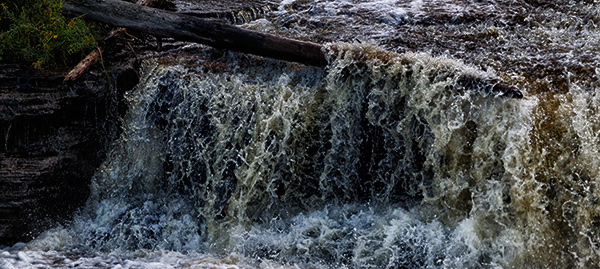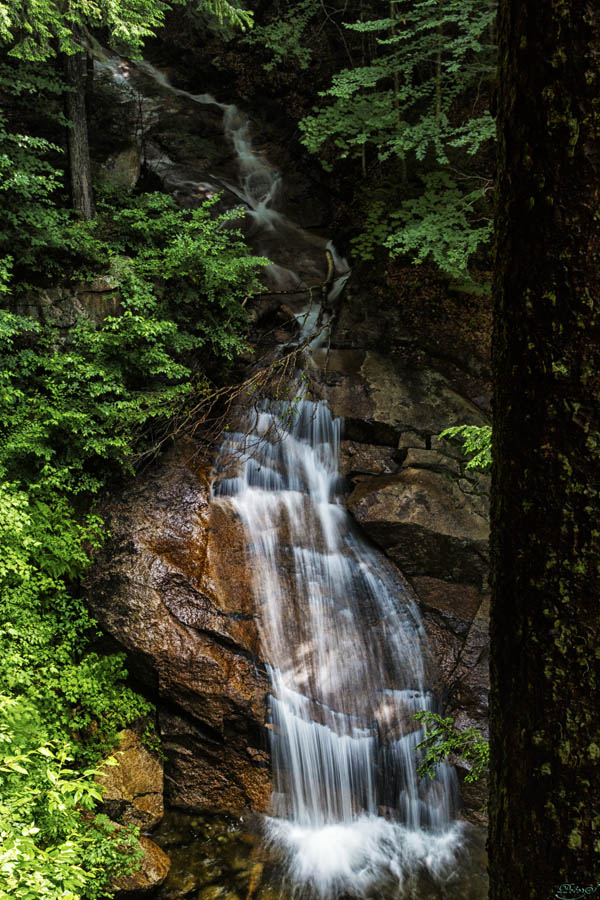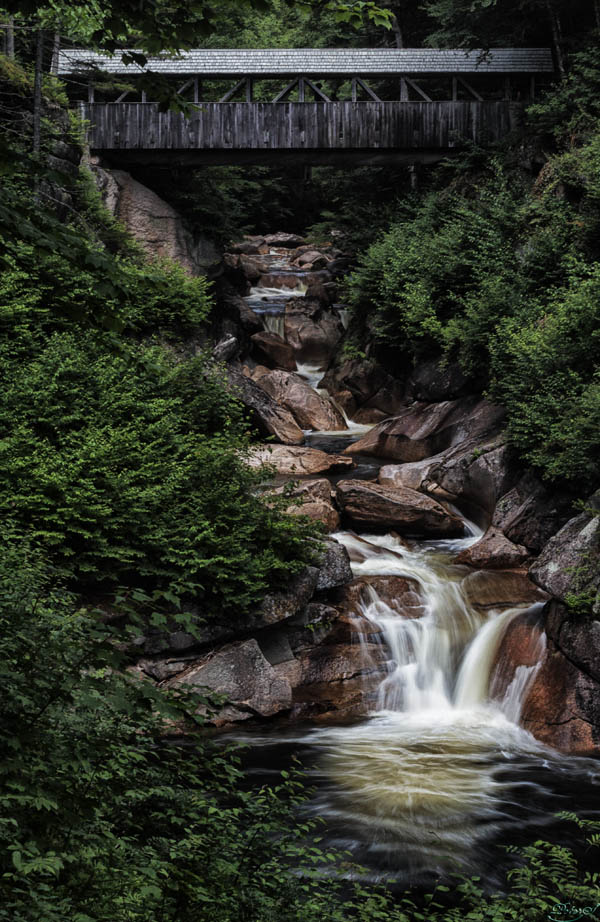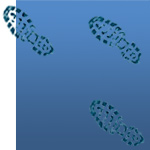|
Perhaps because we are mostly
water, as is our world, we are drawn to water as art. This dynamic, clear
liquid playing over immovable, opaque stone provides the pleasing contrast that
speaks to the confrontations and harmony interacting in our daily
lives.
To capture water's role in all
this, I feel a photograph needs to show its movement, its flow, while the rocks
and vegetation around it remain in sharp, inflexible focus. As shown at right,
this requires tricking your camera not to take a regular picture where it
thinks you want all the detail it can capture with its automatic
settings.
Such silky water requires the
camera's aperture (lens opening) to remain open for about 0.4 seconds, which is
a long time for photography. During that 0.4 seconds, the water will move just
enough to show movement without dissolving into a white blur.
All cameras and cellphones have a
setting called shutter priority whereby you can force the opening time to be
0.4 second, or 1/2 second if that's what it offers, with the camera picking the
size of the aperture to match.*
Each camera/cellphone has its own
buttons and dials to set this, so you'll need to read your manual, which you
typically need to download from the vendor's website. If you google "shutter
priority" and your camera/cellphone model number, you often get right to the
instructions.
Quite often, your camera/cellphone
can't make your aperture tiny enough on a bright sunny day, and so much light
would come in over 0.4 seconds that your shot would look washed in white. Your
first compensating adjustment should be to reduce your ISO setting to the
smallest number your camera can do. Still too much light? Use a neutral density
lens filter. Don't have one of those? Hold your darkest sunglasses over the
lens.
Humans can't hold a camera still
for 0.4 seconds, so you'll need a tripod. For cellphones, or when caught
without a tripod, try to find something solid on which to rest your
camera/cellphone. This can be the top of a fence, pressed against the side of a
tree, on a rock with you sprawled undignified on the ground, or such as
that.
When out hunting for waterfalls,
avoid the big, popular Niagara stuff. Go for the delicate slivers fiddling with
dozens of rocks on their way down, often aside the big waterfalls. Early
mornings or just before sunset are better than the harsh light of midday. And
remember that a waterfall can be nearly horizontal, that is, a creek with lots
of mossy boulders decorated in froth.
Back home, postprocess (Photoshop
et al) for less light than most shots. I like filters such as NIK's detail
extractor, but those are advanced tricks you can get into later. For starters,
remember that you're an artist painting with light, and your experiments will
eventually establish your own style based on what speaks to you.
And for the request for an audio
recording of a waterfall to help with insomnia, here's a 26 MB mp3
recording I took hanging around a
waterfall. It goes for 28 minutes.
* Advanced users should use
manual settings where you set both aperture and speed, in which case you set
the 0.4 seconds and typically darken the shot down 2 full stops or
more. |

Waterfall with regular auto camera settings

Same waterfall with silky effect

Deep forest creek as fake oil painting

Common enough along trails
in Fraconia
Notch State Park

Spilling out from the dark woods

Covered trail bridges, hiking with style
 |
| For more pictures of New Hampshire, click here. |
 |
|







